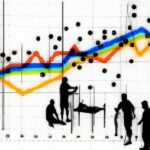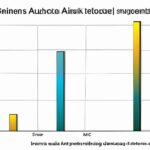The Atkinson Index is valuable but overlooked. It focuses mainly on income distribution and inequality concerns. However, it overlooks the absolute income levels of individuals, showing only relative disparities. This limitation can underestimate poverty levels and mask significant differences in living standards among the populace. Policy decisions based solely on the Atkinson Index may fail to address crucial economic disparities due to this oversight. Its reliance on a specific inequality aversion parameter can also lead to biased interpretations. The Index, though informative, should be complemented with other metrics to provide a more comprehensive analysis of economic inequality and poverty.
Table of Contents
- Assumptions and simplifications
- Dependence on household size and composition
- Inability to capture relative deprivation
- Non-monetary dimensions of poverty
- Sensitivity to distributional changes
(Atkinson's measure of income inequality)
The Atkinson Index, a measure of income inequality, has some limitations despite its usefulness. One drawback is its sensitivity to extreme incomes, which can skew results. Another concern is its reliance on income distribution data, which can be inaccurate or incomplete, leading to biased conclusions. Additionally, the index does not account for non-monetary factors that influence well-being, such as access to healthcare or education. This narrow focus overlooks important aspects of inequality that affect people’s lives. Another limitation is the Index’s inability to capture changes in inequality over time accurately, as it may not reflect shifting economic conditions or policy interventions. Moreover, the Index’s complexity can hinder its practical application, making it challenging for policymakers or researchers to interpret and communicate results effectively. Despite these limitations, the Atkinson Index remains a valuable tool for analyzing income distribution patterns. By understanding its drawbacks, users can employ additional measures or combine it with other indices to gain a more comprehensive understanding of inequality and make informed decisions about addressing social disparities.
Assumptions and simplifications
When delving into the intricacies of the Atkinson Index, it’s crucial to shine a light on its limitations, particularly regarding assumptions and simplifications that underpin this economic measure. These aspects play a significant role in shaping how we understand income inequality but also pose challenges in capturing the full complexity of wealth distribution dynamics.
One key assumption inherent in the Atkinson Index is its focus solely on post-tax income inequality. By honing in on this facet while excluding pre-tax income disparities, there is an implicit simplification at play. This choice may overlook important nuances embedded within broader socioeconomic structures that influence individuals’ earning potential even before taxation enters the equation.
Moreover, another assumption worth pondering is the uniform weight assigned to every individual’s income level when calculating the index. While this streamlined approach aids in computation and analysis, it veers towards oversimplification by treating each person’s financial standing as equally impactful on overall inequality measures. In reality, various factors such as household size, expenses, and regional cost-of-living differences can significantly alter the implications of income levels for different individuals or groups.
The challenge with these assumptions lies in their tendency to mask intricate disparities beneath a facade of numerical precision. It becomes all too easy to lose sight of real people grappling with unequal access to resources and opportunities when reducing complex social realities to mathematical models.
In confronting these limitations head-on, researchers and policymakers must navigate a delicate balance between utilizing simplified metrics like the Atkinson Index for practical purposes while remaining attuned to its inherent constraints. Recognizing where assumptions fall short can open doors for more nuanced analyses that better capture the multifaceted nature of income inequality.
At its core, acknowledging these limitations invites us to embrace humility in our pursuit of understanding societal issues—reminding us that behind every data point lies a human story waiting to be heard amidst the cacophony of statistical chatter. Let us tread carefully through realms rife with assumptions and simplifications, keeping our hearts open to narratives yet untold and complexities waiting to unfold before our eyes.
Dependence on household size and composition
When examining the limitations of the Atkinson Index, it’s crucial to delve into how this measure can be influenced by factors like household size and composition. The concept of dependence on these variables unveils a complex interplay between economic inequality and social dynamics.
Imagine a small family living in a modest house—a single parent with two children. Their financial resources are stretched thin, navigating the delicate balance between meeting basic needs and saving for unexpected expenses or future aspirations. In such a scenario, even minor fluctuations in income distribution within the household can have profound effects on their well-being.
Now picture a large extended family under one roof—grandparents, parents, siblings, and cousins all sharing intertwined destinies. Here, the Atkinson Index may struggle to capture the nuanced relationships at play. Economic disparities within this diverse group could shape interpersonal dynamics, influencing decisions about resource allocation and support systems.
The reliance of the Atkinson Index on household size becomes evident as we consider these varied familial settings. A smaller household might experience more significant impacts from income differentials among members compared to a larger household where resources are shared across multiple individuals.
Moreover, differing compositions within households introduce additional layers of complexity. A nuclear family structure versus an extended family setup can significantly alter how economic resources flow and are perceived among members. Emotional ties and cultural norms further influence financial interactions within these distinct frameworks.
In essence, when exploring limitations tied to dependence on household size and composition in relation to the Atkinson Index, we confront not just numbers but intricate human stories intertwined with economic realities. These stories reflect struggles for equity amid inherent inequalities that transcend mere statistical measures.
As researchers grapple with refining methods to account for such intricacies in measuring income inequality effectively across diverse households, they must acknowledge that behind every data point lies a web of emotions, aspirations, conflicts, and collaborations shaping our societal tapestry.
Inability to capture relative deprivation
The Atkinson Index is a powerful tool for measuring income inequality, but like any other statistical method, it comes with its limitations. One significant drawback is the inability to capture relative deprivation adequately. Relative deprivation refers to the feeling of being worse off compared to others in society.
Imagine waking up every day in a modest house you worked hard for, surrounded by people driving luxurious cars and dining at fancy restaurants. You might feel left behind or inadequate despite having enough to meet your basic needs. This sense of relative deprivation can’t be quantified solely through income levels; it’s about perception and comparison.
The Atkinson Index focuses on how resources are distributed within a population based on their level of inequality. While this provides valuable insights into the distribution of wealth, it fails to account for the psychological impact of relative deprivation on individuals.
For example, two individuals may have similar incomes according to the Atkinson Index, but one feels content and fulfilled while the other feels resentful and deprived due to social comparisons. This disparity in emotional well-being cannot be captured by traditional economic metrics alone.
Moreover, factors such as access to opportunities, healthcare services, education quality, and social connections play a crucial role in determining an individual’s perceived well-being beyond just income levels. The Atkinson Index falls short in considering these multifaceted aspects that contribute significantly to an individual’s overall quality of life.
In essence, our experiences are not limited merely by what we earn but also by how we perceive our standing relative to others around us. The inability of the Atkinson Index to encapsulate this subjective element hinders its effectiveness in providing a holistic understanding of inequality within societies.
To create more comprehensive measures that truly reflect people’s lived experiences and emotions related to relative deprivation will require incorporating qualitative data alongside quantitative assessments—a challenging task that demands interdisciplinary collaboration across fields like sociology, psychology, and economics.
(Atkinson Index)
Non-monetary dimensions of poverty
When delving into the realm of poverty, it’s crucial to acknowledge that its impact extends far beyond just monetary constraints. The Atkinson Index, while insightful in capturing income disparities, falls short in encapsulating the holistic essence of poverty. There exist intricate layers within this societal issue that are not quantifiable solely through financial metrics.
Picture a community where dilapidated buildings with peeling paint house families struggling to make ends meet. Within these walls lies a sense of desolation and fragility that transcends material wealth. The lack of access to quality education and healthcare perpetuates cycles of disadvantage, eroding individuals’ chances for upward mobility.
In such environments, emotional poverty reigns supreme—an intangible yet profoundly impactful dimension often sidelined by conventional measures. Feelings of hopelessness and despair can pervade the hearts of those trapped in intergenerational poverty, shaping their perspectives and limiting aspirations for a brighter future.
Moreover, social exclusion casts a long shadow over impoverished communities, fostering stigmatization and ostracism. Imagine being constantly judged for your economic circumstances—shunned by society despite possessing resilience and untapped potential within you. This psychological toll exacted by societal biases exacerbates the already arduous journey out of destitution.
Non-monetary dimensions also encompass loss of autonomy and dignity—the inability to make choices due to limited resources strips away one’s agency, leaving them disempowered and voiceless in decision-making processes that shape their lives. This erosion of self-worth can inflict profound wounds on individuals’ psyches, trapping them in cycles of dependency and marginalization.
Furthermore, environmental degradation disproportionately impacts marginalized communities grappling with poverty—a stark reminder that socio-economic inequities intersect with ecological vulnerabilities. Picture rivers contaminated with industrial waste snaking through neighborhoods where children play amidst toxic fumes—a somber illustration of how environmental injustices compound existing hardships faced by the impoverished.
To truly grasp the multifaceted nature of poverty requires embracing these non-monetary dimensions which weave an intricate tapestry intertwined with economic disparities. Only by acknowledging these complexities can policymakers devise comprehensive strategies aimed at alleviating suffering while empowering individuals to reclaim their narratives from the clutches of destitution.
Sensitivity to distributional changes
When it comes to assessing inequality and poverty in a society, the Atkinson Index is a valuable tool. However, one must acknowledge its limitations, especially concerning sensitivity to distributional changes. Imagine this index as a lens through which we view wealth distribution – it can sometimes be foggy or unclear.
Picture a community where income disparities are gradually shrinking due to effective policies aimed at redistributing wealth. The Atkinson Index might not capture these subtle shifts with precision. It’s like trying to measure the wind with bare hands; you sense it but struggle to grasp its full extent.
The essence of sensitivity lies in picking up on nuances, reading between the lines of data points that may seem insignificant at first glance. Just as an artist discerns shades of color invisible to an untrained eye, so should our measurement tools be finely tuned to detect even the most delicate changes in societal equity.
Consider a scenario where a new economic policy leads to slight adjustments in income distribution among different socio-economic groups. While these modifications may appear minor on paper, their implications could ripple across communities like gentle waves shaping the shoreline over time.
The real challenge emerges when we try fitting these intricate patterns into rigid mathematical formulas designed for more straightforward distributions. Imagine trying to contain sunlight within closed fists – some warmth escapes no matter how tightly you clasp your fingers together.
Emotions run high when discussing issues of fairness and justice, particularly when people’s livelihoods hang in the balance. Sensitivity becomes crucial not just as a statistical concept but as an ethical compass guiding us towards greater social cohesion and inclusivity.
In conclusion, while the Atkinson Index serves as a valuable metric for gauging inequality levels, its limitations regarding sensitivity to distributional changes remind us of the complexities inherent in measuring human prosperity and well-being accurately. Like tuning an instrument before playing a symphony, we must fine-tune our tools constantly to ensure they resonate with the ever-evolving dynamics of societal progress and equality.













